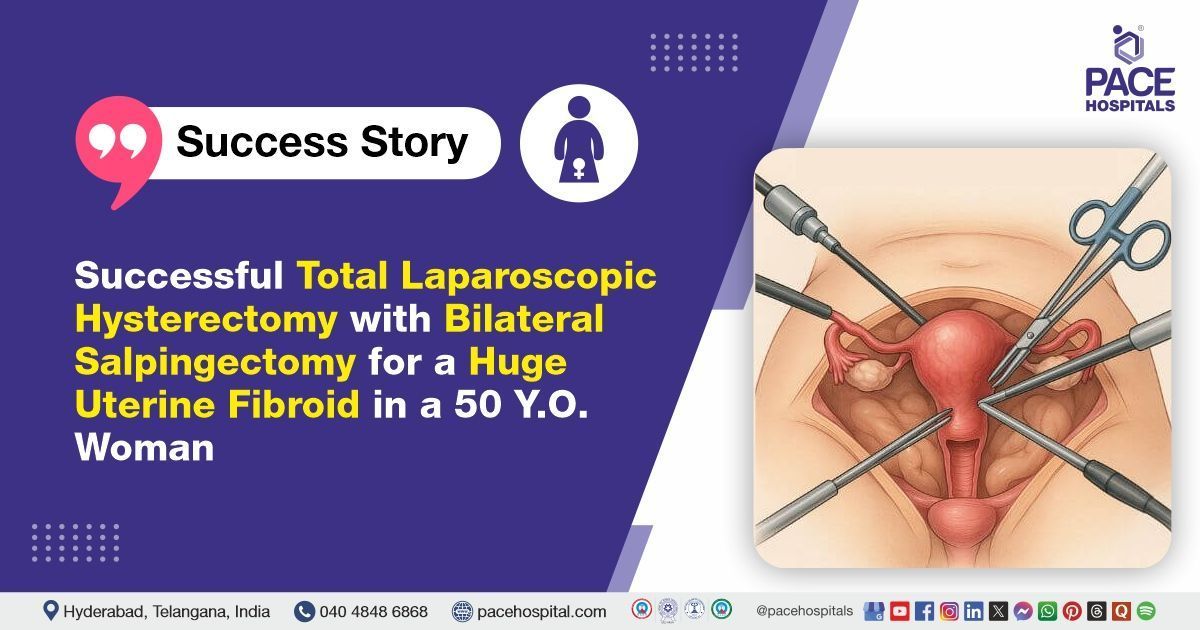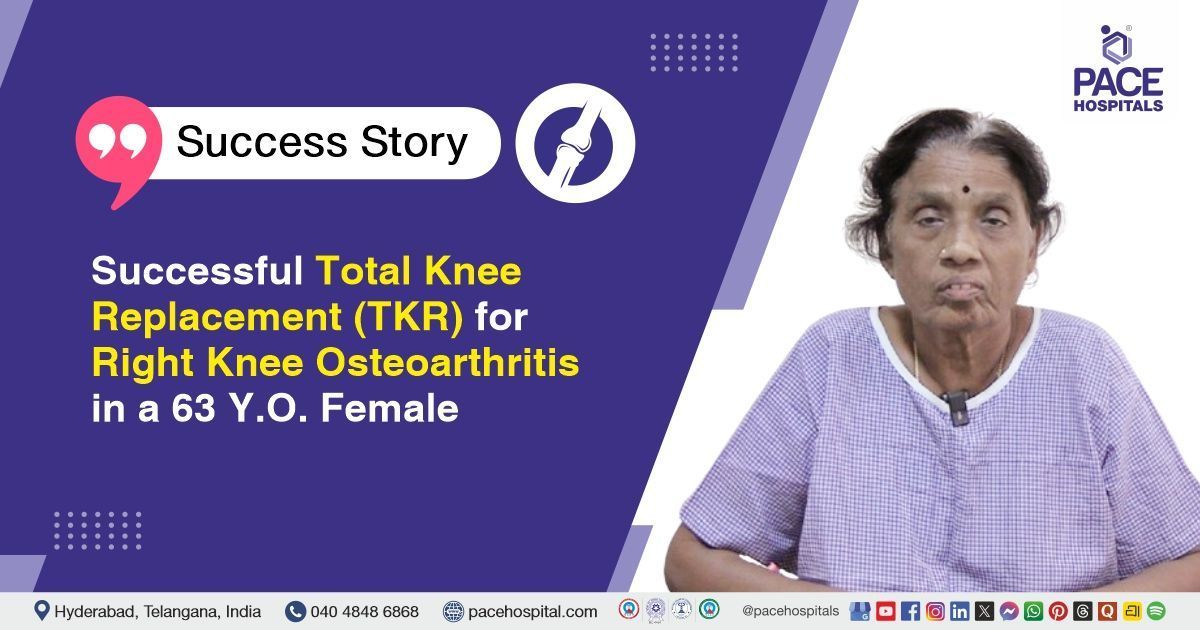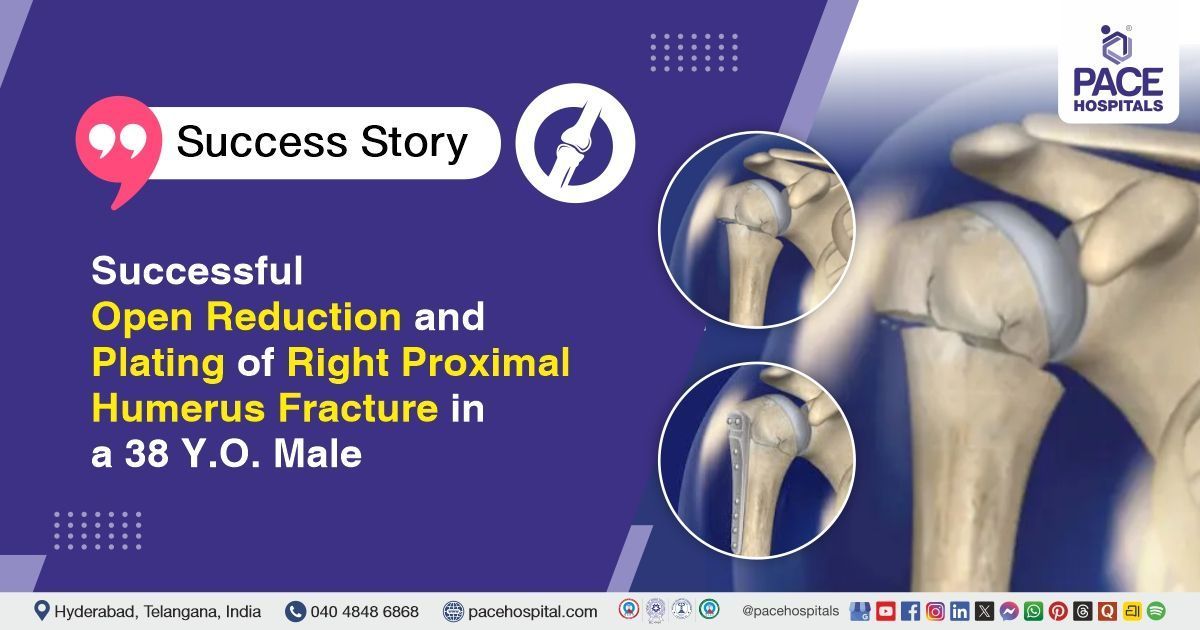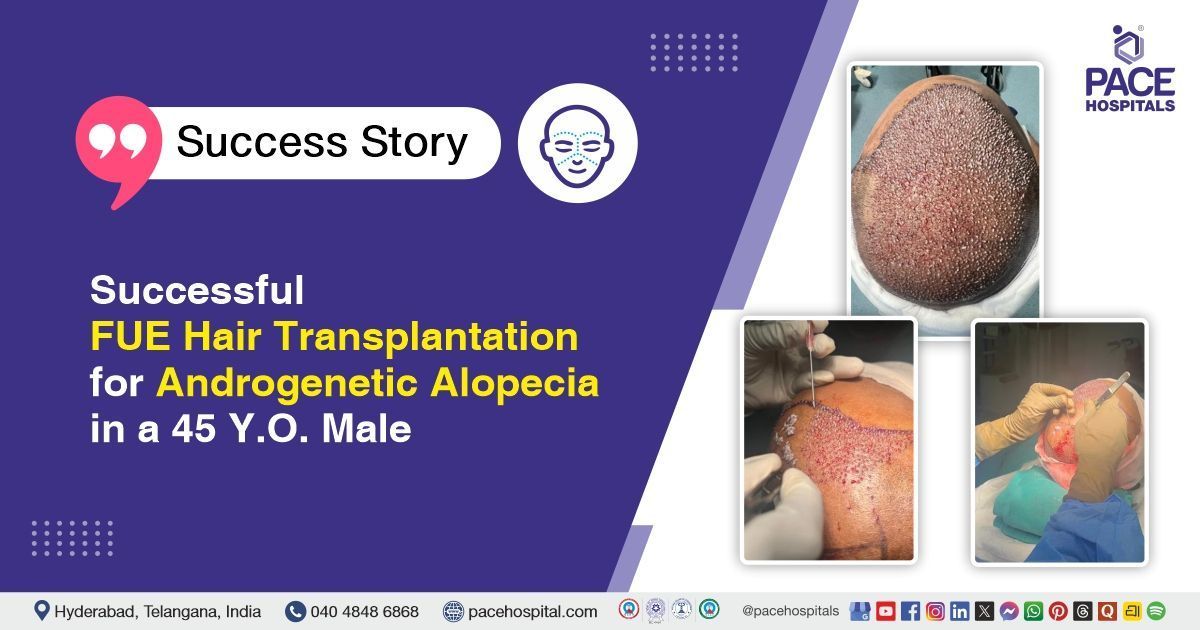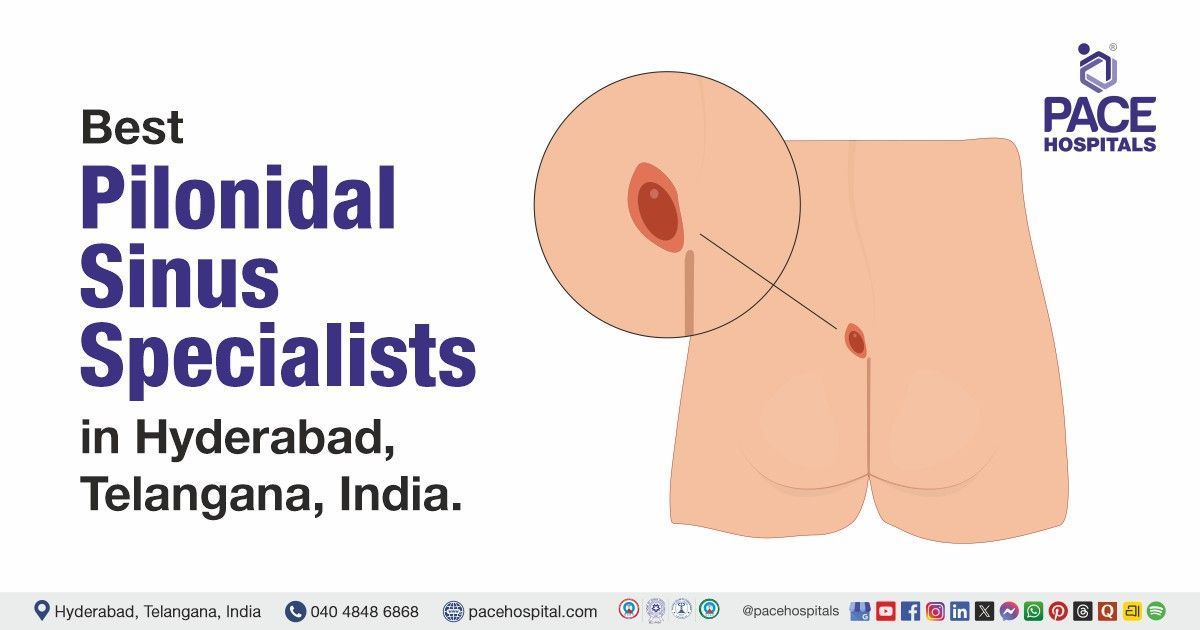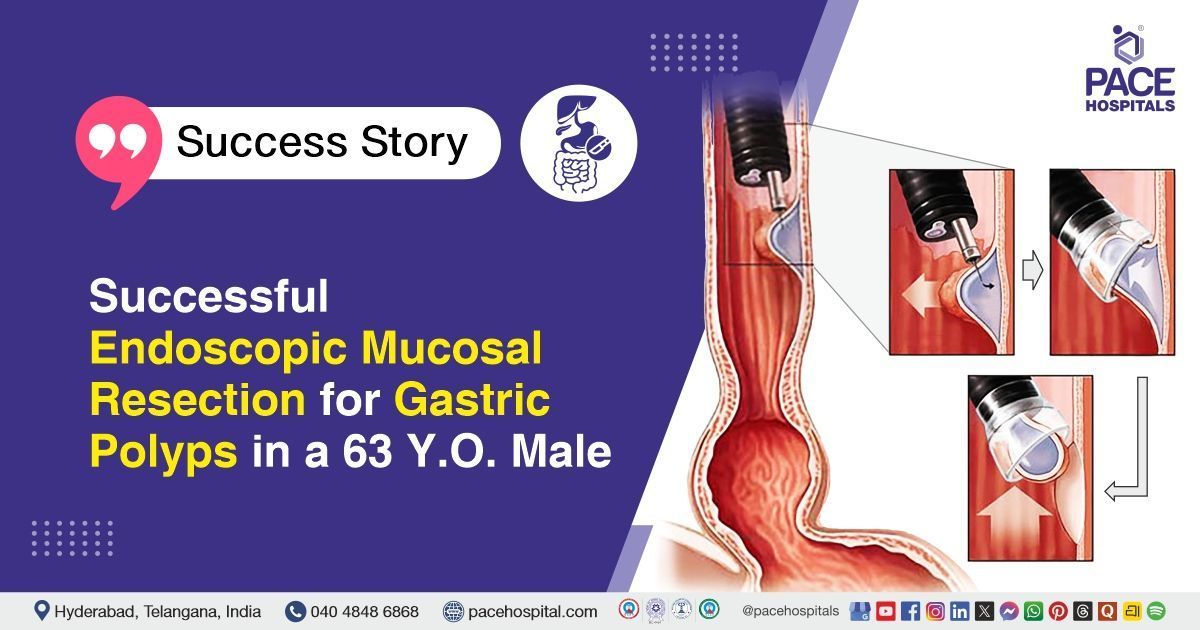Successful Total Laparoscopic Hysterectomy with Bilateral Salpingectomy for a Huge Uterine Fibroid in a 50-Y.O Woman
PACE Hospitals
PACE Hospitals' Gynaecology team successfully performed a Total Laparoscopic Hysterectomy with Bilateral Salpingectomy on a 50-year-old female diagnosed with a huge Uterine fibroid causing abnormal uterine bleeding. Intraoperatively, a DJ stent was placed due to ureteral compression of the left ureter by the fibroid. The procedure was aimed to relieve her symptoms, prevent further complications, and improve the patient’s overall quality of life.
Chief Complaints
A 50-year-old female patient with a
body mass index (BMI) of 26.2 presented to the Gynaecology Department at
PACE Hospitals, Hitech City, Hyderabad, with complaints of heavy bleeding on and off. These symptoms significantly affected her quality of life and prompted further evaluation and surgical intervention.
Past Medical History
The patient had a past obstetric history of two full-term deliveries by lower segment caesarean section (P2L2 - LSCS). She is a known case of hypertension (HTN) and diabetes mellitus (DM), both of which are under medical management. There is no known history of drug allergies.
On Examination
On examination, the patient was conscious, coherent, and cooperative, with stable vital signs. General physical examination revealed no pallor, icterus, cyanosis, clubbing, lymphadenopathy, or pedal edema. Abdominal examination showed obesity, and the uterus was enlarged to approximately 20–22 weeks in size, mobile, and non-tender. Per speculum and per vaginal examination revealed a pinpoint cervix positioned high, with no fornices tenderness. Systemic examination of the respiratory and cardiovascular systems was within normal limits.
Diagnosis
Upon admission to PACE Hospitals, the patient was evaluated by the Gynaecology team, which included a detailed review of her medical history and a comprehensive clinical examination revealed a significantly enlarged, mobile, non-tender uterus corresponding to a 20–22 weeks gestation size.
Ultrasound imaging confirmed the presence of a huge uterine fibroid, with abnormal uterine bleeding. Additionally, mild hydronephrosis due to fibroid-induced ureteral compression is noted. Preoperative investigations, including blood tests, showed mild anemia and neutrophilic leukocytosis, suggestive of chronic blood loss and possible inflammation. Electrolytes, renal function, and chest X-ray findings were within acceptable limits, with no signs of acute infection or cardiopulmonary compromise.
Based on the confirmed findings, the patient was advised to undergo a
Uterine Fibroid Treatment in Hyderabad, India, under the expert care of the Gynaecology Department, ensuring comprehensive evaluation and management tailored to the patient's needs.
Medical Decision Making
After a detailed consultation with Dr. Mugdha Bandawar, a Gynaecologist, in collaboration with Urology consultants Dr. Abhik Debnath and Dr. K. Ravichandra, a multidisciplinary approach was taken to determine the most appropriate diagnostic and therapeutic strategy for the patient. Considering her history of hypertension, diabetes, and previous caesarean deliveries, alongside the clinical findings of a significantly enlarged uterus and ultrasound evidence of a huge fibroid, the team assessed the extent of the pathology and potential complications.
Further evaluation, including physical examination and laboratory investigations, confirmed the need for surgical intervention. It was determined that a Total Laparoscopic Hysterectomy with Bilateral Salpingectomy, along with DJ stent placement, was identified as the most effective medical approach to relieve symptoms and prevent further gynaecological or urological complications.
The patient and her family were informed about her condition, the procedure, its associated risks, and its potential to alleviate symptoms and enhance her quality of life.
Surgical Procedure
Following the decision, the patient was scheduled to undergo a Total Laparoscopic Hysterectomy Surgery in Hyderabad at PACE Hospitals along with Bilateral Salpingectomy. The specimen was retrieved through a small Pfannenstiel incision. A cystoscopy with DJ stent insertion was also performed due to ureteral compression by the fibroid.
The following steps were carried out during the procedure:
- Preoperative Preparation and Access: The patient was brought to the operating room and placed under general anesthesia. A Foley catheter was inserted to drain the bladder, and the abdomen and perineal area were cleaned and draped in a sterile manner. Prophylactic antibiotics were administered to prevent infection. A small incision was made at the umbilicus to create pneumoperitoneum by insufflating carbon dioxide. Laparoscopic ports were then inserted to allow for the use of the camera and surgical instruments.
- Exploration and Uterine Mobilization: Laparoscopic examination revealed a bulky uterus with a huge fibroid measuring approximately 18 x 19 cm. Both fallopian tubes and ovaries appeared normal, and the rest of the abdomen showed no abnormalities. The round ligaments were coagulated and cut on both sides. Dissection proceeded through the broad ligament, and the bladder was carefully pushed down to avoid injury. The uterine arteries and supporting ligaments were coagulated and transected, allowing complete mobilization of the uterus.
- Removal of Fallopian Tubes and Uterus: Bilateral salpingectomy was performed by coagulating and excising both fallopian tubes while preserving the ovaries. Due to the huge size of the uterus, it was removed intact through a small Pfannenstiel incision rather than vaginally. The uterus, cervix, and fallopian tubes were retrieved and sent for histopathological examination. The vaginal vault was then laparoscopically closed with sutures to secure the surgical site.
- Cystoscopy and DJ Stent Placement: Given the indentation of the left ureter by the huge fibroid, cystoscopy was performed to assess the bladder and ureteric orifices. A Double-J stent was successfully placed in the left ureter despite some difficulty. The bladder was inspected to confirm its integrity before concluding this part of the surgery.
- Hemostasis and Closure: A thorough inspection of the surgical field was done to ensure complete hemostasis. Any minor bleeders were controlled. The pelvic cavity was irrigated, and no active bleeding or injury was noted.
Postoperative Care
The postoperative period was uneventful. During the hospital stay, the patient was closely monitored in the intensive care unit before being shifted to the ward once stable. She received intravenous antibiotics, pain relief medications, stomach protection therapy, blood clot prevention measures, and supportive treatments, including anti-nausea and bowel-regulating agents. Pain was well controlled with appropriate analgesics. The patient was discharged in stable condition with appropriate follow-up instructions.
Discharge Medications
Upon discharge, the patient was prescribed an antibiotic to prevent postoperative infection, a pain relief medication to manage discomfort, a medication to reduce stomach acid, an anti-inflammatory or enzyme supplement to aid tissue healing, vitamin D, multivitamins to support overall nutrition, and a medication to protect against blood clots. She was also advised to use a topical ointment for local wound care.
Advice on Discharge
The patient was advised to avoid heavy lifting and strenuous exercise during the recovery period. She was recommended to avoid prolonged sitting and to prevent constipation and straining by maintaining adequate hydration and fiber intake. Wearing an abdominal binder was advised to support the surgical site.
Dietary advice
A soft diet was suggested to ease digestion and promote healing.
Emergency Care
The patient was informed to contact the emergency ward at PACE Hospitals in case of any emergency or development of symptoms like heavy bleeding, fever, abdominal pain, or vomiting.
Review and Follow-up Notes
The patient was advised to return for a follow-up appointment with the Gynaecologist in Hyderabad at PACE Hospitals after 1 week. She was instructed to bring the biopsy report along and to ensure that a prior appointment was scheduled for the visit.
Conclusion
The patient underwent a successful laparoscopic hysterectomy for a huge uterine fibroid without complications. Recovery was smooth with proper postoperative care. Follow-up has been scheduled to ensure continued recovery and long-term well-being.
Multispecialty coordination in enhancing surgical safety
In complex pelvic surgeries, a multidisciplinary approach is often essential to ensure patient safety and optimal outcomes. Collaboration between Gynaecologist / Gynaecology doctor and Urologists/ Urology doctor becomes especially important when huge pelvic masses distort normal anatomy. Ureteral involvement or compression can increase the risk of injury during dissection. In such situations, intraoperative cystoscopy and placement of DJ stents can help in identifying and protecting the ureters. Cross-speciality communication and planning allow for greater intraoperative flexibility.
Early involvement of relevant specialities improves decision-making and surgical precision. Additionally, multispecialty teamwork makes it easier to handle unexpected findings quickly. This collaborative approach reduces complications and enhances patient recovery. It reflects the growing importance of integrated care in modern surgical practice. Overall, multidisciplinary coordination is a key factor in managing high-risk and anatomically challenging procedures.
Share on
Request an appointment
Fill in the appointment form or call us instantly to book a confirmed appointment with our super specialist at 04048486868

